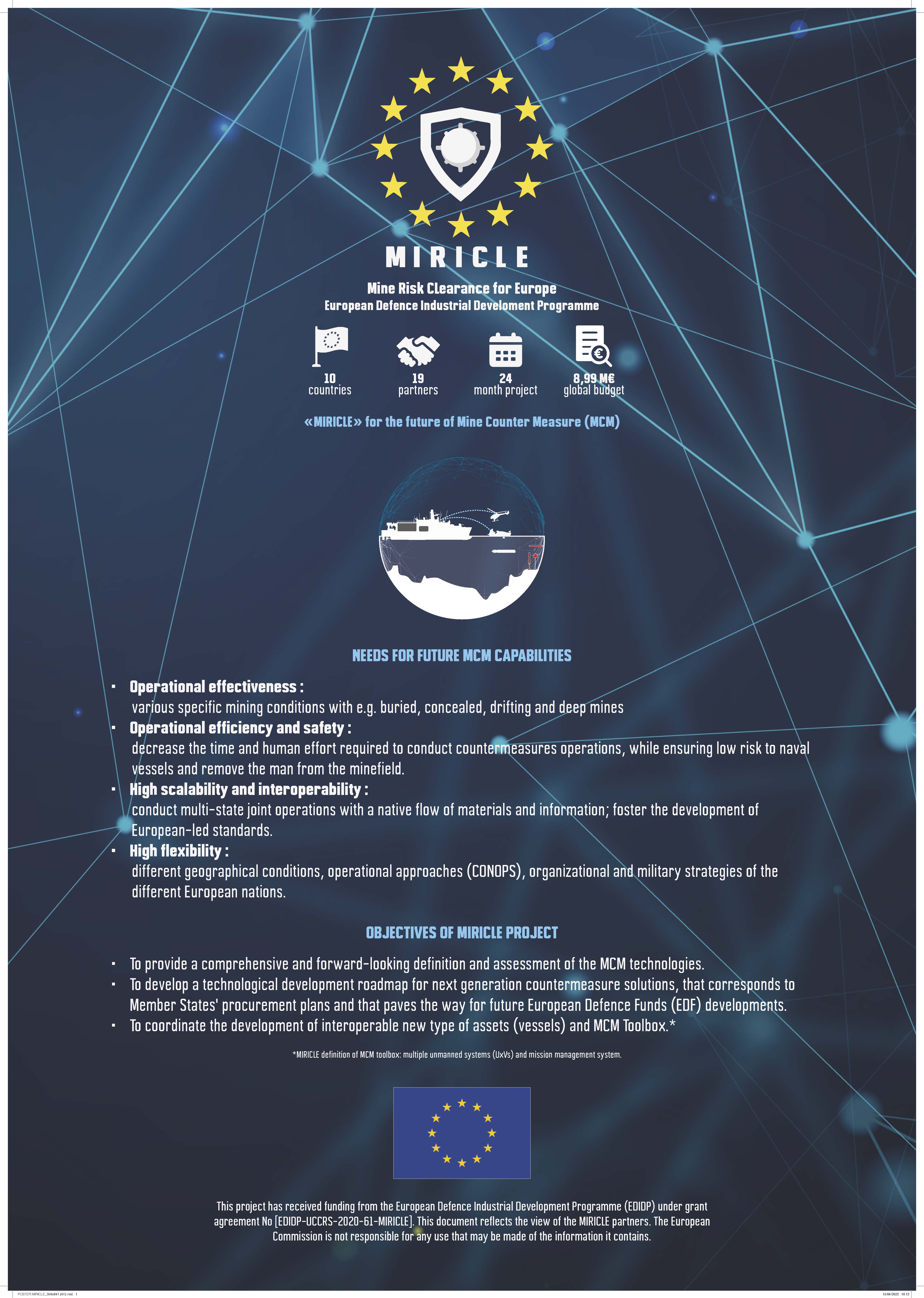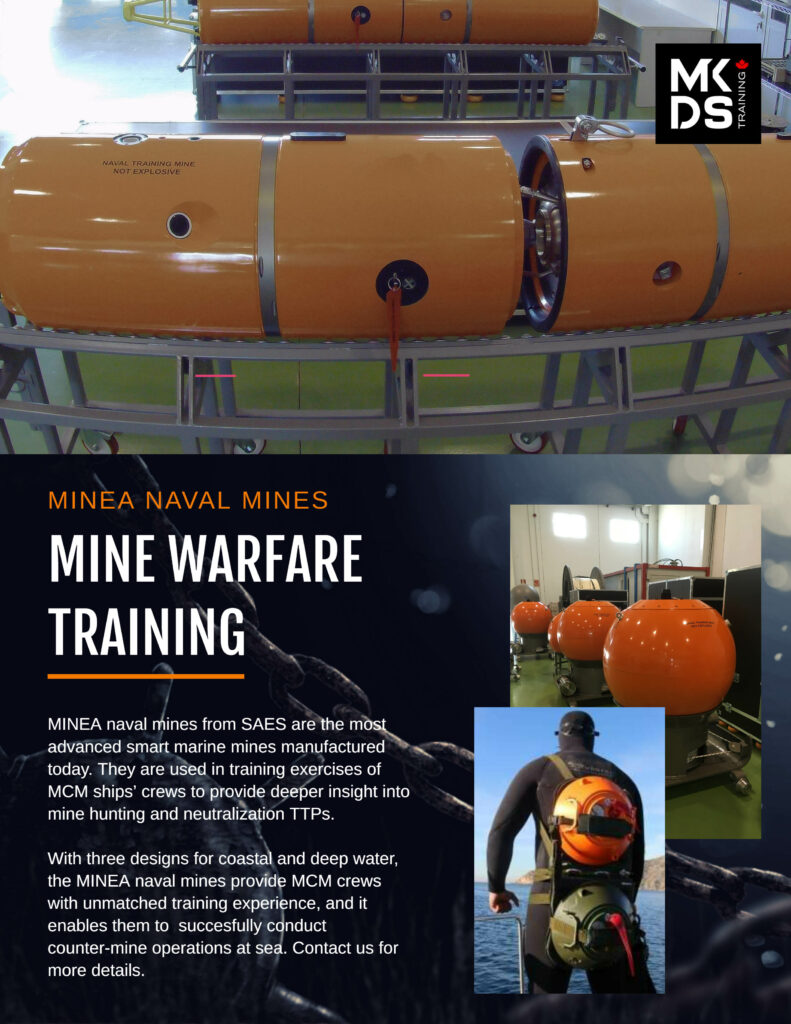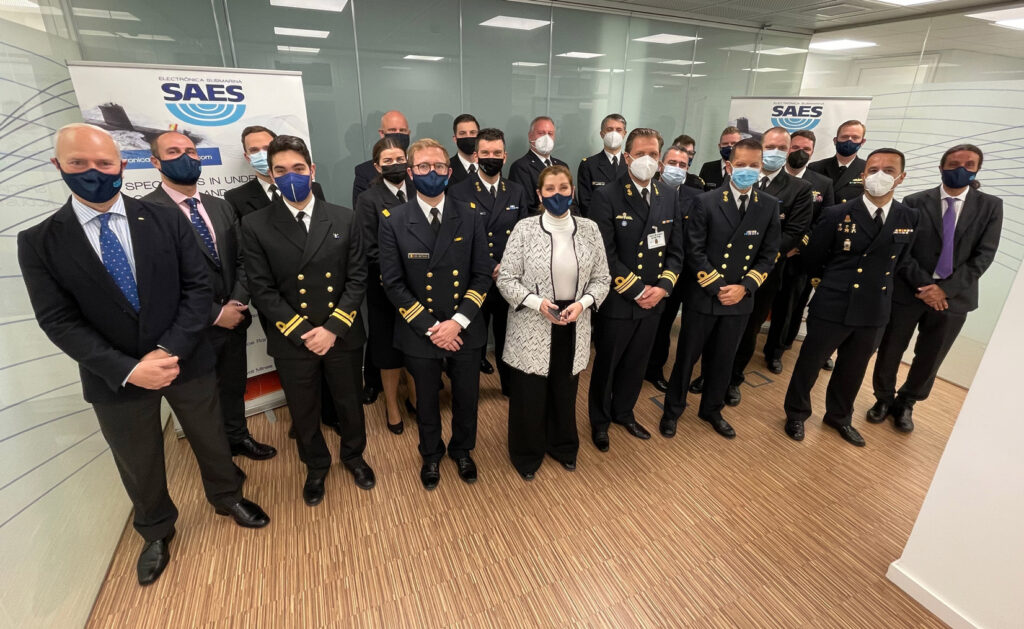As the European MIRICLE project will soon blow its first candle, it is time to settle down and look back above the shoulder. What have we reached?
The MIne RIsk CLearance for Europe project is an EDIDP project, funded by the European Commission and co-funded by some member states: BE, FR, NL, RO, PT, GR, ES, LV. It joins together 19 partners, from 10 countries. It started almost a year ago, on December 2021. Main objective is to guarantee EU sovereignty and supply chain across Europe. Path to follow is two-fold: deliver an innovative vision of the technological developments that shall be made in the upcoming years and create an MCM (Mine Counter Measure) European ecosystem.
So far, end-user requirements were collected. Several meetings and workshops were held and precious documents exchange were made. What for? To safeguard that MIRICLE innovation perspective indeed adheres to their actual needs. Afterwards, some technological bricks were investigated further in order to start drafting future on a more concrete basis. Loop back to end users was made, directions for the upcoming period were given. Is that all? No. We have learned to collaborate together. Consortium members first, leaving behind our personal interests for the benefits of the community. Consortium members and end users then, creating the relationship that is needed to exchange key information. But all this can not be led apart from the European Commission. Consortium members and the European Commission have also created a true partnership which is key for the project success!
MIRICLE project has received funding from the European Defence Industrial Development Programme (EDIDP). This communication reflects only the author’s view; and not the one of the Commission.








